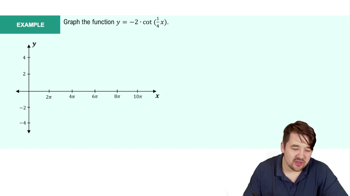Here are the essential concepts you must grasp in order to answer the question correctly.
Vertical Asymptotes
A vertical asymptote occurs in a function when the function approaches infinity or negative infinity as the input approaches a certain value. This typically happens at values of x that make the denominator of a rational function equal to zero, provided that the numerator does not also equal zero at that point.
Recommended video:
Introduction to Cotangent Graph Example 1
Rational Functions
A rational function is a function that can be expressed as the ratio of two polynomials. The general form is f(x) = P(x)/Q(x), where P and Q are polynomials. Understanding the behavior of rational functions, especially their asymptotic behavior, is crucial for analyzing their graphs and determining points of discontinuity.
Recommended video:
Intro to Rational Functions
Factoring Polynomials
Factoring polynomials involves rewriting a polynomial as a product of its factors, which can simplify the analysis of functions. For example, the function f(x) = (x^2 - 7x + 6)/(x^2 - 1) can be factored to identify points where the function is undefined, helping to determine the presence of vertical asymptotes.
Recommended video:
Introduction to Polynomial Functions
 Verified step by step guidance
Verified step by step guidance Verified video answer for a similar problem:
Verified video answer for a similar problem:



 6:47m
6:47m